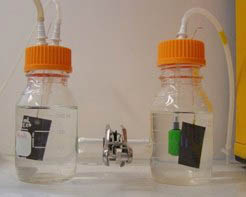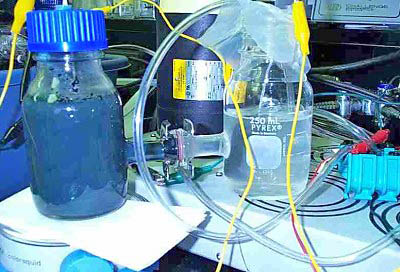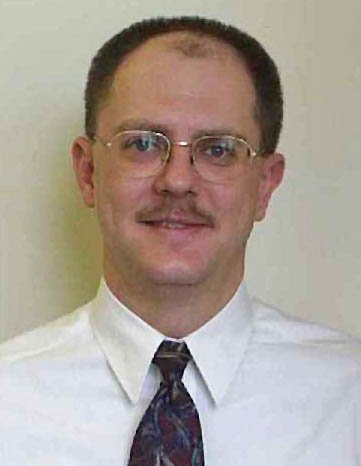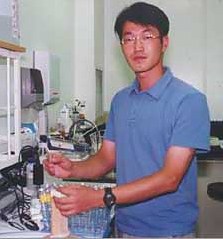A device that generates electricity while treating sewage is being developed by Bruce Logan and Booki Min at Pennsylvania State University. The microbial fuel cell could provide a modern solution to two worrying problems – how to reduce the energy costs involved in treating raw sewage and how to produce power without relying on non-sustainable resources. The invention could be especially useful in the developing world, allowing sewage that might otherwise be disposed of in the local river to be treated without having to install a conventional electricity generation system.
Environmental engineer Bruce Logan explains that unlike a conventional hydrogen fuel cell, his design captures electrons released by bacterial metabolism as they digest the organic matter found in sewage. The stream of electrons is tapped off to produce an electrical current. Power output is still relatively low, concedes Logan, but the technology is improving rapidly and eventually could be used to run a small wastewater treatment plant, which would be especially attractive in developing countries, he says. The system might also be used to treat waste from animal farms, in particular pig farms which have serious odour and waste disposal problems, food processing plants and even manned space missions.

Conventional two-chamber microbial fuel cell (Credit: Bruce Logan)
We generated up to 72 watts per square metre in this system, says Logan, and we have built other smaller systems which produce enough electricity to power a small electric fan. However, the team has already beaten this published result with a device that can produce up to 350 watts per square metre. We’d like to get in the range of 500-1000 per square metre, he says, so we are getting close that goal.
Logan doesn’t envision using his microbial fuel cell for the same type of applications as hydrogen fuel cells, such as in automobiles or houses. We see using this any place where there’s a high concentration of organic matter, he says. The most obvious application would be in wastewater treatment plants, which essentially could power themselves as they treat water. Such a technology would be particularly useful in developing countries, Logan suggests, because it would produce a net amount of electricity, offering a reason to keep a treatment plant running besides just treating wastewater. Even if it’s only powering a cell phone tower, that would be a reason enough to keep it going, he says.

Same setup but running on waste water (Credit: Bruce Logan)
David Bagley, a scientist at the University of Toronto, has calculated that the energy potential in wastewater is almost 10 times the cost to treat it. I think the microbial fuel cells that Bruce Logan has developed are fascinating. The application to wastewater treatment is an excellent example of looking at wastes as a resource – to produce electricity in this case – while they are being treated, he told Spotlight. I wish I had thought of microbial fuel cells! he confessed. Logan adds that, If we could achieve just one-twentieth of that power [calculated by Bagley], we could break even. We’re confident we’re going to be able to do more than that.

Bruce Logan
With respect to implementation, technical challenges still remain, adds Bagley. Logan, and others are addressing this issue but other challenges such as scale-up to larger facilities remain. Scale-up will involve ensuring the organic constituents are brought into contact with the organisms effectively. There are also safety issues associated with the effluent that will ultimately be discharged from the system.

David Bagley
Bagley anticipates the progress already achieved could mean that full-scale testing will be underway within five years.

Booki Min
Further reading
Environ. Sci. Technol., 2004, 38, 5809-5814
http://dx.doi.org/10.1021/es0491026
Bruce Logan
http://www.engr.psu.edu/ce/enve/logan/
David Bagley
http://www.civ.utoronto.ca/profs/bagley/personal/dmb.html
A video showing the new microbial fuel cell powering a fan (5.3 Mb)
http://www.engr.psu.edu/ce/enve/images/MFC-video1371.MPG